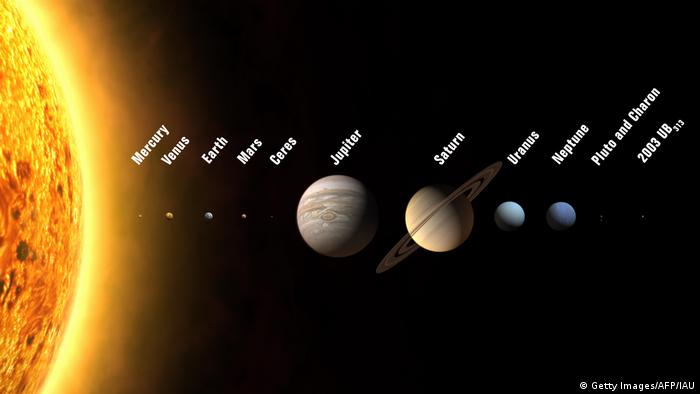A spacecraft bound for Mercury has swooped past the Earth in a maneuver to tweak its path to the solar system's innermost planet.
SLING SHOT MANEUVER
"Without these maneuvers, it would simply fly past Mercury," said ESOC head Paolo Ferri. "It has to brake."
The closest part of the approach — with the spacecraft some 12,700 kilometers away from Earth — occurred over the South Atlantic. Telescopes in Chile even caught a glimpse of the speeding probe.
One critical phase came soon after that as the probe flew into the earth's shadow, shielded from the sun for 34 minutes and being forced to rely on its batteries.
The mission is a joint project of the European Space Agency (ESA) and the Japan Aerospace Exploration Agency (JAXA).
The COVID-19 pandemic threat forced the team to work with minimal face-to-face interaction while ensuring all steps in the process were properly covered.
The spacecraft is carrying two scientific orbiters, and it should reach Mercury in 2025. It will swing past Venus twice — firstly in October — and six times past Mercury itself.
Scientists hope to learn more about the origin and composition of Mercury, the least explored of our solar system's four rocky planets. The planet is only a little bigger than our moon and circles the sun in just 88 days.
Scientists hope it will slow the probe down, to ensure it doesn't overshoot the target.

BepiColombo — a probe sent to discover more about the planet Mercury — swept past Earth on Friday in a flypast aimed at bending its path toward the center of the solar system.
A ground team at the European Space Agency's operations center (ESOC) in Darmstadt, Germany — reduced in number amid the coronavirus lockdown — monitored the operation.
Before leaving Earth's vicinity, BepiColombo beamed back black-and-white pictures of home.
The team sought to fine-tune the spacecraft's trajectory and speed, ensuring it doesn't overshoot the scorched planet, which lies just 60 million kilometers (37 million miles) from the sun.
The tug of gravity from Earth slowed the spacecraft down and fixed it more firmly on its path to the sun. It is the first of nine planet-based gravity assists aimed at guiding BepiColombo to its intended destination in one piece.
Read more: Why isn't Germany taking over the moon?
BECAUSE THAT WOULD CREATE EVEN MORE NAZI'S ON THE MOON MEMES

BepiColombo — a probe sent to discover more about the planet Mercury — swept past Earth on Friday in a flypast aimed at bending its path toward the center of the solar system.
A ground team at the European Space Agency's operations center (ESOC) in Darmstadt, Germany — reduced in number amid the coronavirus lockdown — monitored the operation.
Before leaving Earth's vicinity, BepiColombo beamed back black-and-white pictures of home.
The team sought to fine-tune the spacecraft's trajectory and speed, ensuring it doesn't overshoot the scorched planet, which lies just 60 million kilometers (37 million miles) from the sun.
The tug of gravity from Earth slowed the spacecraft down and fixed it more firmly on its path to the sun. It is the first of nine planet-based gravity assists aimed at guiding BepiColombo to its intended destination in one piece.
Read more: Why isn't Germany taking over the moon?
BECAUSE THAT WOULD CREATE EVEN MORE NAZI'S ON THE MOON MEMES
"Without these maneuvers, it would simply fly past Mercury," said ESOC head Paolo Ferri. "It has to brake."
The closest part of the approach — with the spacecraft some 12,700 kilometers away from Earth — occurred over the South Atlantic. Telescopes in Chile even caught a glimpse of the speeding probe.
One critical phase came soon after that as the probe flew into the earth's shadow, shielded from the sun for 34 minutes and being forced to rely on its batteries.
The mission is a joint project of the European Space Agency (ESA) and the Japan Aerospace Exploration Agency (JAXA).
The COVID-19 pandemic threat forced the team to work with minimal face-to-face interaction while ensuring all steps in the process were properly covered.
The spacecraft is carrying two scientific orbiters, and it should reach Mercury in 2025. It will swing past Venus twice — firstly in October — and six times past Mercury itself.
Scientists hope to learn more about the origin and composition of Mercury, the least explored of our solar system's four rocky planets. The planet is only a little bigger than our moon and circles the sun in just 88 days.
The probe is named after Italian mathematician and engineer Giuseppe ''Bepi'' Colombo, who devised the use of planetary flybys for approaches to Mercury. He died in 1984

BEPICOLOMBO SPACECRAFT LAUNCHES QUEST TO SURVEY MERCURY
Unstable and eccentric
Mercury is the smallest planet in our solar system and is closest to the Sun. Its orbit around the Sun is unstable, and is growing larger all the time because Jupiter is slowly pulling Mercury out of its orbit. At some point, this could see Mercury colliding with Earth. But fear not, that won't happen for many millions of years.

BEPICOLOMBO SPACECRAFT LAUNCHES QUEST TO SURVEY MERCURY
Unstable and eccentric
Mercury is the smallest planet in our solar system and is closest to the Sun. Its orbit around the Sun is unstable, and is growing larger all the time because Jupiter is slowly pulling Mercury out of its orbit. At some point, this could see Mercury colliding with Earth. But fear not, that won't happen for many millions of years.
No comments:
Post a Comment